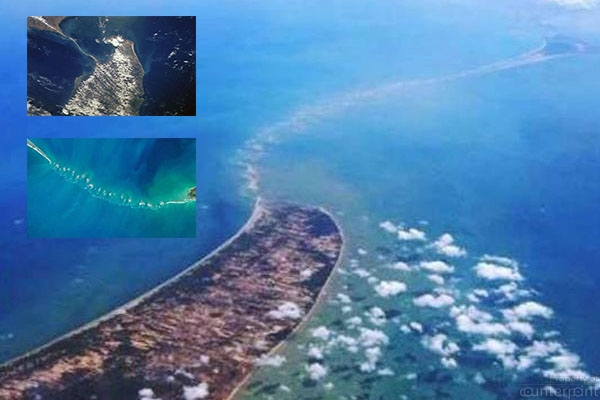Ram Setu has been at the center of debate since 2005 when the UPA government proposed the Sethusamudram Shipping Canal Project, to build a shipping canal to link the Arabian Sea with the Bay of Bengal. For this, a channel passing through the limestone shoals of Ram Setu was to be dredged in the Sethusamudram sea, between Tamil Nadu and Sri Lanka
The government of India has approved an underwater research project to ascertain the origins of the Ram Setu — a 48-km-long chain of shoals between India and Sri Lanka.
Talking about the aim of the exploration, Union Minister of State for Tourism and Culture, Prahlad Singh Patel, said, “The world should get to know about the Ram Setu through evidence based on scientific research.”
Ram Setu, also known as Adam’s Bridge or Nala Setu, holds religious significance because of the Ramayana.
The central advisory board on archaeology, which functions under the Archaeological Survey of India (ASI), has approved the proposal for this underwater exploration project. The study — to be conducted by the Council for Scientific and Industrial Research (CSIR) and National Institute of Oceanography (NIO) Goa — will focus on the process behind Ram Setu’s formation and also whether there are any submerged habitations around the structure.
Patel said, “ASI has been asked for permission by the NIO on two counts — excavation to ascertain the age of the structure, and to explore the surrounding area. The permission has been granted.”
Also, Ram Setu’s age will be ascertained through the study of fossils and sedimentation to see if it correlates with the Ramayana period, sources in the Ministry of Culture told The Indian Express. Keeping in view the upcoming Assembly elections in Tamil Nadu, sources say research is likely to begin this year itself.
In it’s proposal note, NIO said: “The historicity and the date of ‘Ramayana’ remain a debatable subject among historians, archaeologists and scientists. It is proposed to carry out scientific and underwater archaeological studies to understand the nature and formation of the Ram Setu and its surrounding area.”
The agency’s research vessel named Sindhu Sadhana will be deployed to collect samples of sediment from 35-40 metres below the water level. Sindhu Sadhana is an indigenous exploration vessel which can stay underwater for up to 45 days.
Ram Setu has been at the centre of debate since 2005 when the UPA government proposed the Sethusamudram Shipping Canal Project, to build a shipping canal to link the Arabian Sea with the Bay of Bengal. For this, a channel passing through the limestone shoals of Ram Setu was to be dredged in the Sethusamudram sea, between Tamil Nadu and Sri Lanka. However, the project was opposed by environmental groups as well as by the BJP as they said that the project would damage the Ram Setu
At the time, AIADMK chief Jayalalithaa had demanded from the-then Prime Minister Manmohan Singh that Rama Setu be declared a national monument, even as then DMK chief M Karunanadhi had come down heavily on “communal forces” for using the “myth” of Ram Sethu to stall the Sethusamudram project.
(Indian Express)





